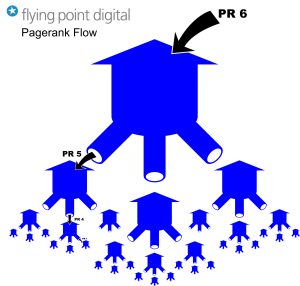SEO has gone through a tremendous evolution in recent years, and 2014 has been no exception to this trend. Between Panda 4.0, Pigeon, Penguin 3.0, the HTTPS update, authorship removal, and more, we see that Google is constantly refining and adjusting its algorithm to reward sites that genuinely benefit their customers, and de-prioritize marketing methods that don’t provide users with any value. While “content is king” has become the most commonly used motto to be uttered by SEO professionals in the past 2 years, it can't be the entire focus of your SEO strategy. There are still specific ranking factors that must be considered that we at the Flying Point SEO department have observed that significantly move the needle on SEO performance.
- Proper canonicalization and removal of duplicate content
Especially for e-commerce sites, being able to show Google which pages are the “canonical” version of your URL is one of the most important ranking factors we have identified in 2014. As an example, we recently led a site migration on an e-commerce site that had thousands of dynamically generated pages indexed in the search engine, and due to CMS restrictions, the webmaster was unable to use canonical tags to handle these pages. When the new site was launched, we ensured that all product and category pages featured canonical tags pointing to the correct version of the URL. Because these canonicals were written into the first ever renditions of the source codes of each page, there was never any opportunity for search engines to index any dynamically generated versions of the pages. When the site migration happened, the size of the site dropped dramatically, and rankings skyrocketed as Google understood that this relatively low number of pages featured only that content that was 100% unique.
- Number of clicks off the home page
The number of clicks from the home page required for search engines to locate a page has been an important ranking factor throughout the history of SEO, and it continues to be equally significant in 2014. In brief: pages that are too deep in your site architecture are not going to receive the same weight as those directly linked to from the home page. Especially now that producing “fresh content” has become such an important strategy in SEO, it is necessary to keep in mind how this fresh content is going to be found. If new content pages are buried deep in your site architecture, without the help of external links or social media signals, Google may not assign any importance to these pages. Even worse, it might not even find them.
 A visual demonstration of how PageRank is distributed from the home page to deeper pages on the site.
A visual demonstration of how PageRank is distributed from the home page to deeper pages on the site.
- High-quality external links pointing to targeted pages (not just the home page)
In recent years, SEO has gone through a lot of drastic changes when it comes to how an external backlink profile impacts SEO rankings. Some SEO professionals say “linkbuilding is dead;” others continue to try to find methods to build as many links as possible across a wide variety of domains of varying qualities. What we have found to be most effective in terms of obtaining links is always quality over quantity. If the same amount of effort is required to obtain one link on a high Domain Authority site (generally >50 or more depending on the industry), particularly on a page with a high PageRank, this is recommended above simply trying to build as many low-to-medium-quality links as possible. Furthermore, for best results, these links should aim to boost the authority of a handful of your targeted pages, and not always link directly to the home page!
- Succinct, accurate title tags
In the past, a popular SEO tactic was to stuff as many keywords in a title tag as possible, perhaps separated with characters such as a hyphen or a pipe ( | ). This method was popular for a long time because it actually used to work! However, especially since the launch of the Hummingbird update, Google has become more sensitive to keyword stuffing and has basically taken the stance that shorter title tags are better for user experience, and therefore receive points from the algorithm. Learn more about Google’s rules about writing shorter, more concise title tags.
5. Well-written body copy on category pages
There is recurring debate in the digital marketing community about whether or not body copy on category pages is good for user experience and/or SEO. However, especially on e-commerce sites, the fact remains that there isn’t too much other content that the search engine can crawl on these highly important pages that are the ones we truly want to rank. Therefore, it is crucial to include at least 100 words about the types of products you will find within each category. If user experience is a concern, simply ensure that the copy is actually valuable to the users and not simply stuffed with SEO jargon. Pick a font that fits in nicely with your site design, and place the text on a logical part of the page (generally within a banner in the header or at the bottom of the list of products).
While the above recommendations are key ranking factors, these 5 strategies cannot operate in a vacuum. It is important to consider all of the other ranking factors in Google’s algorithm, which continues to evolve and become more complex over time.


-3.jpg?width=300&name=rendered%20(6)-3.jpg)
COMMENTS